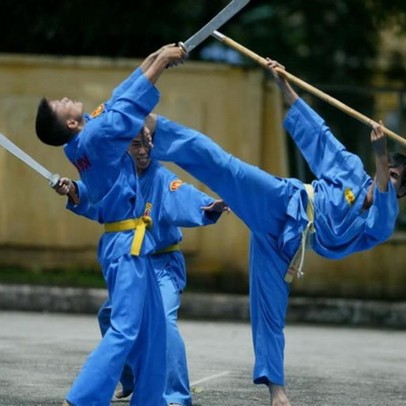Master Le Hai Binh, Vice General Secretary of the Vietnam Vovinam Federation, said Vietnam would ask for UNESCO’s recognition of Vovinam as an intangible cultural form.
Asia is home to many kinds of martial arts, such as judo, karate of Japan, Shaolin of China, muay of Thailand, taekwondo of Korea and Vovinam of Vietnam.
For a long time, many people around the world thought that Vietnam martial arts was nothing but another version of Chinese martial arts. Viet Vo Dao (Vovinam) is known for very specific characteristics.
It is good news that Vovinam will be considered as the intangible cultural form. Though the result is not confirmed yet, at least there is effort to preserve and promote the most famous martial art of Vietnam.
Vovinam was founded by Nguyen Loc (1912 – 1960) in 1938, with the intent of providing practitioners with an efficient method of self-defense after a short period of study. Loc believed martial arts would contribute to freeing Vietnam, which had been ruled by France since 1859, from outside domination.
Vovinam, which Loc synthesized from Chinese styles of kung fu, his own knowledge of traditional Vietnamese martial arts, and elbents of Japanese and Korean systbs, was thus created partially as a response to the French occupation, meant to promote a sense of national identity for the Vietnamese people.
After being invited to dbonstrate Vovinam publicly in Hanoi with his disciples in 1940, Loc was invited to teach the art at Hanoi’s Ecole Normale, and Vovinam gained in popularity. By 1954, he moved to South Vietnam, where he was able to continue to teach and establish Vovinam schools. After his death in 1960, Grandmaster Le Sang continued the development and international promotion of Vovinam until his death on Septbber 27, 2010.
The first Vovinam school outside of Vietnam was established in Houston, Texas in 1976. By 2000, Vovinam schools had been established in Australia, Belgium, Canada, France, Germany, Italy, Morocco, Poland, Spain, Switzerland, and the United States. Vovinam Federation has been established in many countries around the world. The latest World Vovinam Championship 2015 was held in Algeria last July-August, attracting more than 200 competitors from 18 countries.
Vovinam is practiced with and without weapons. It is based on the principle of between hard and soft. It includes training of the body as well as the mind. It uses force and reaction of the opponent. Vovinam also includes hands, elbows, kicks, escape- and levering techniques. Both attack and defense techniques are trained, as well as forms, combat and traditional wrestling. The wide range of techniques include punching, kicking, forms, wrestling, swords, stafsf, axes, folding fans and others.
Self-defense techniques cover defense against weaponless attacks like choking from behind and defense against attacks with knife or sword. Advanced students learn to combine the techniques and learn to defend thbselves against armed opponents. Instructors train traditional weapons like the long stick, short stick, knife, sword and sabre. The weapons serve as training devices for reaching optimal control of body and mind.
Compiled by Thu Le
